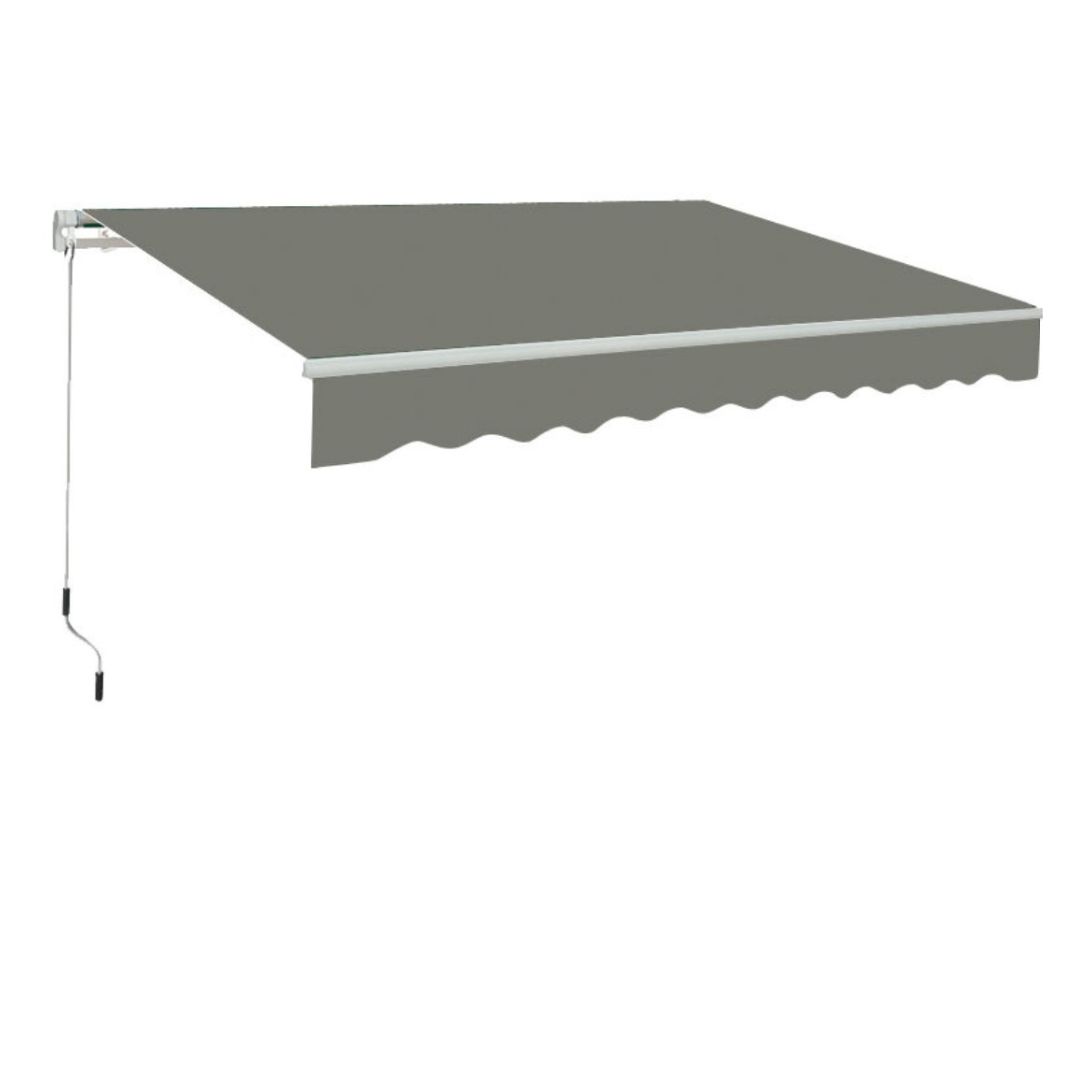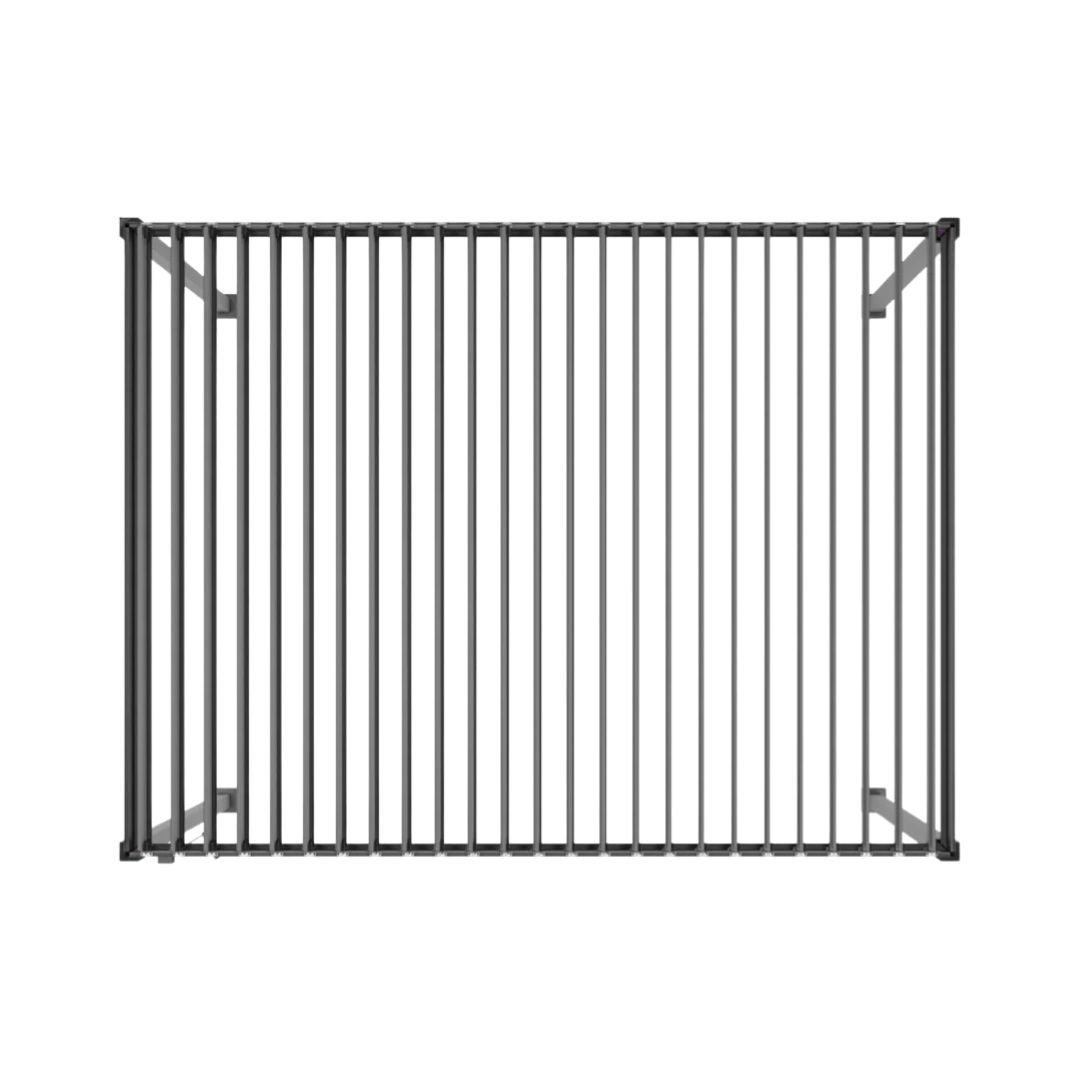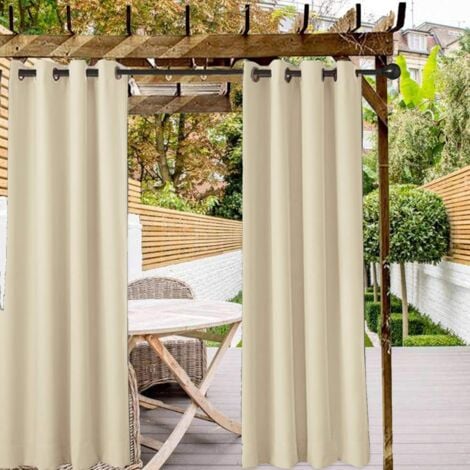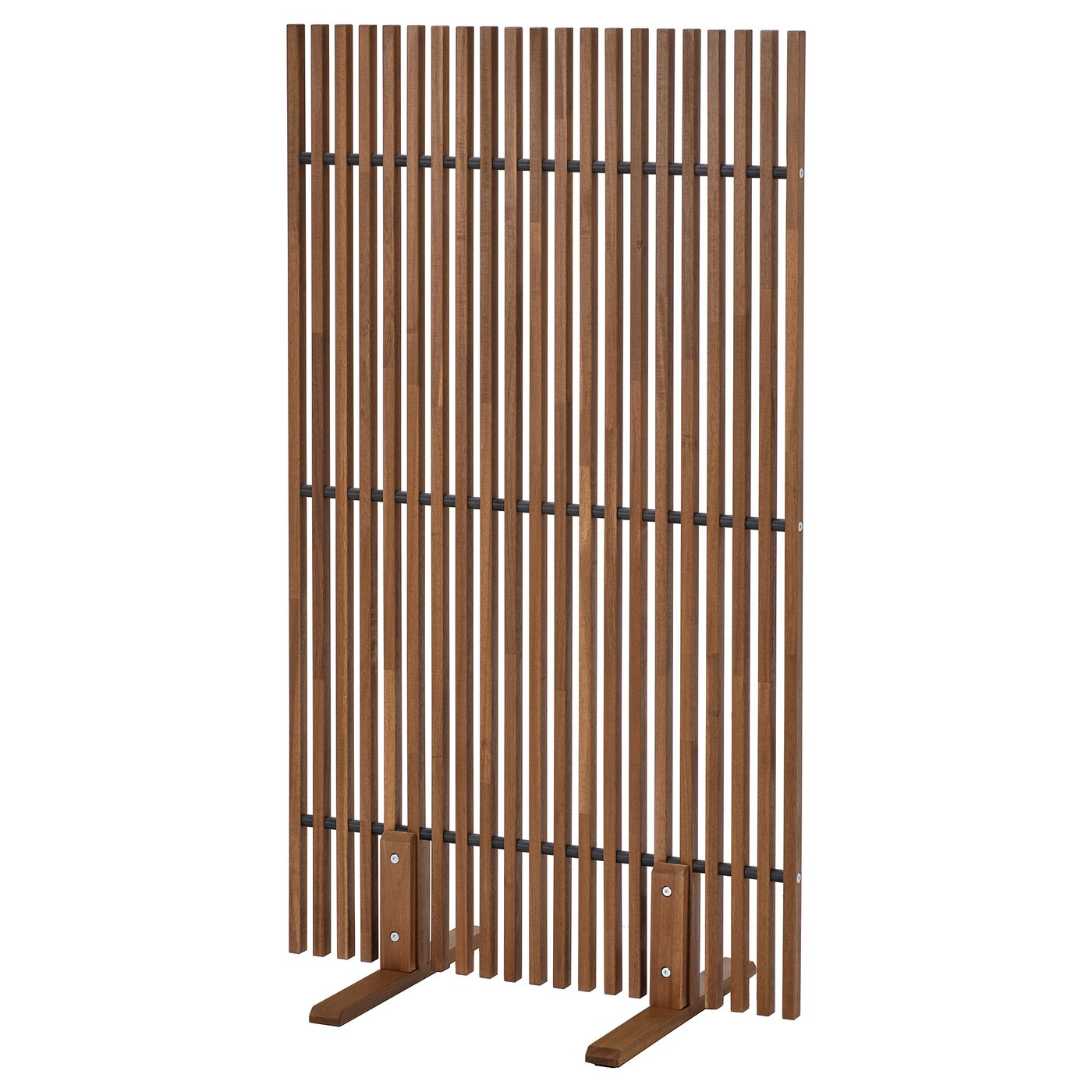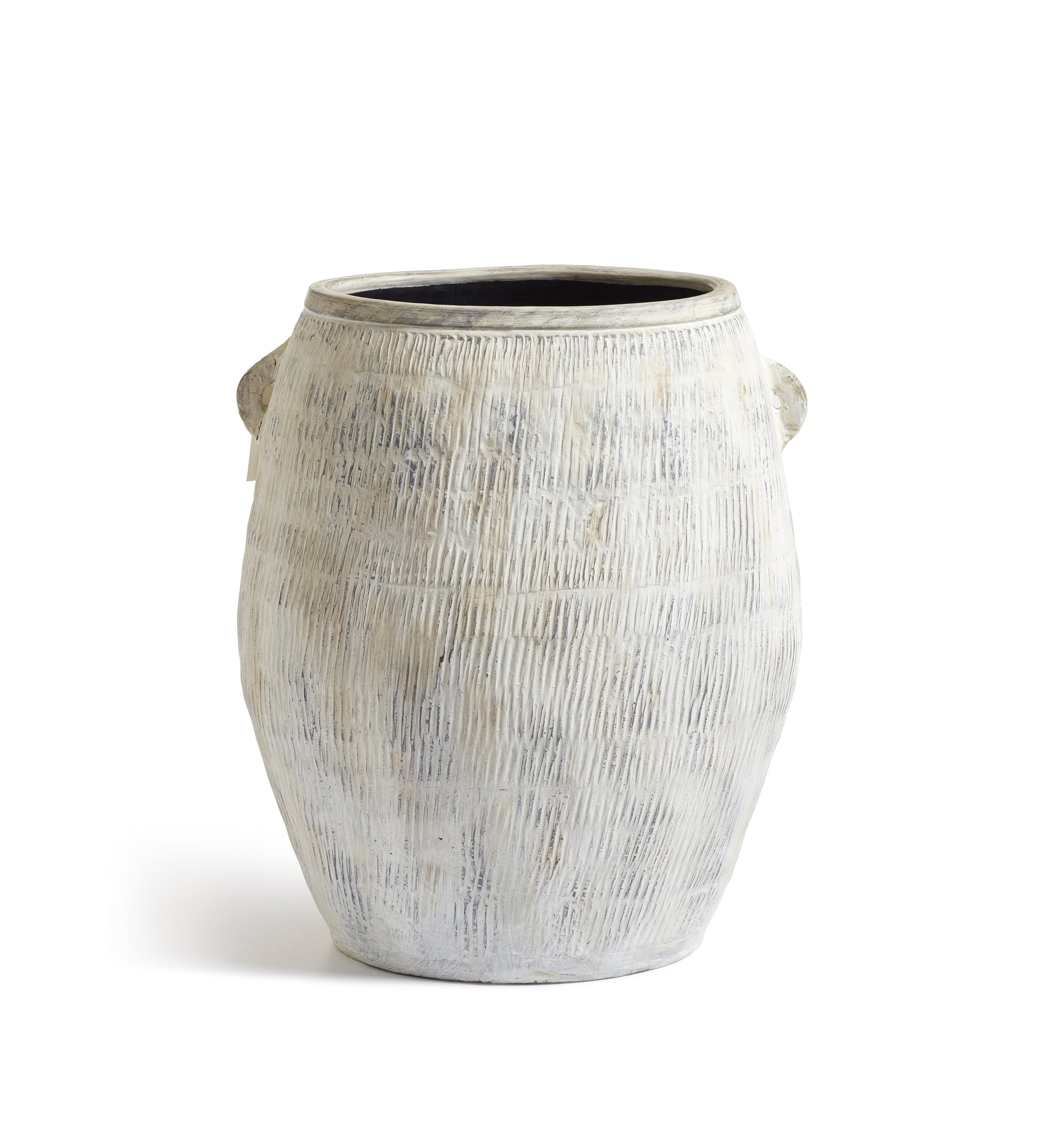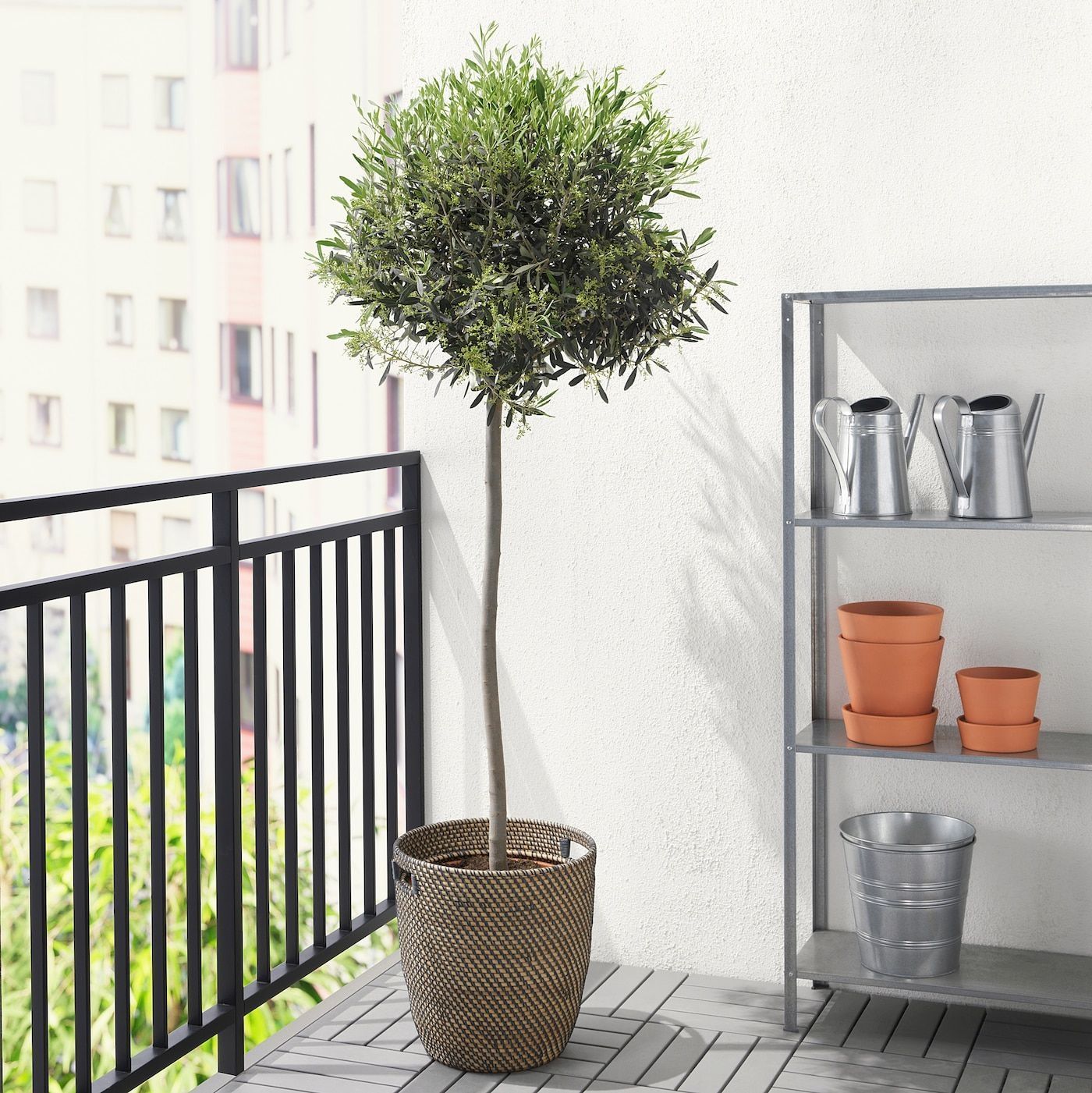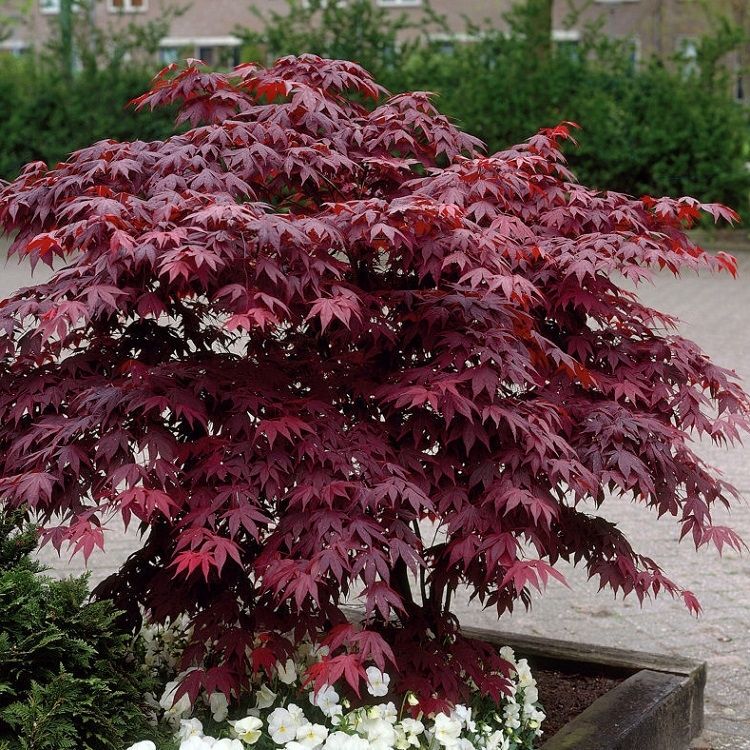11 Stylish Balcony Shade Ideas to Keep You Cool When It’s Hot in the City — "The Ultimate Blend of Convenience and Design"
Shelter and cool down your balcony, whatever its size or location, with these stylish ideas from interior and landscape design experts
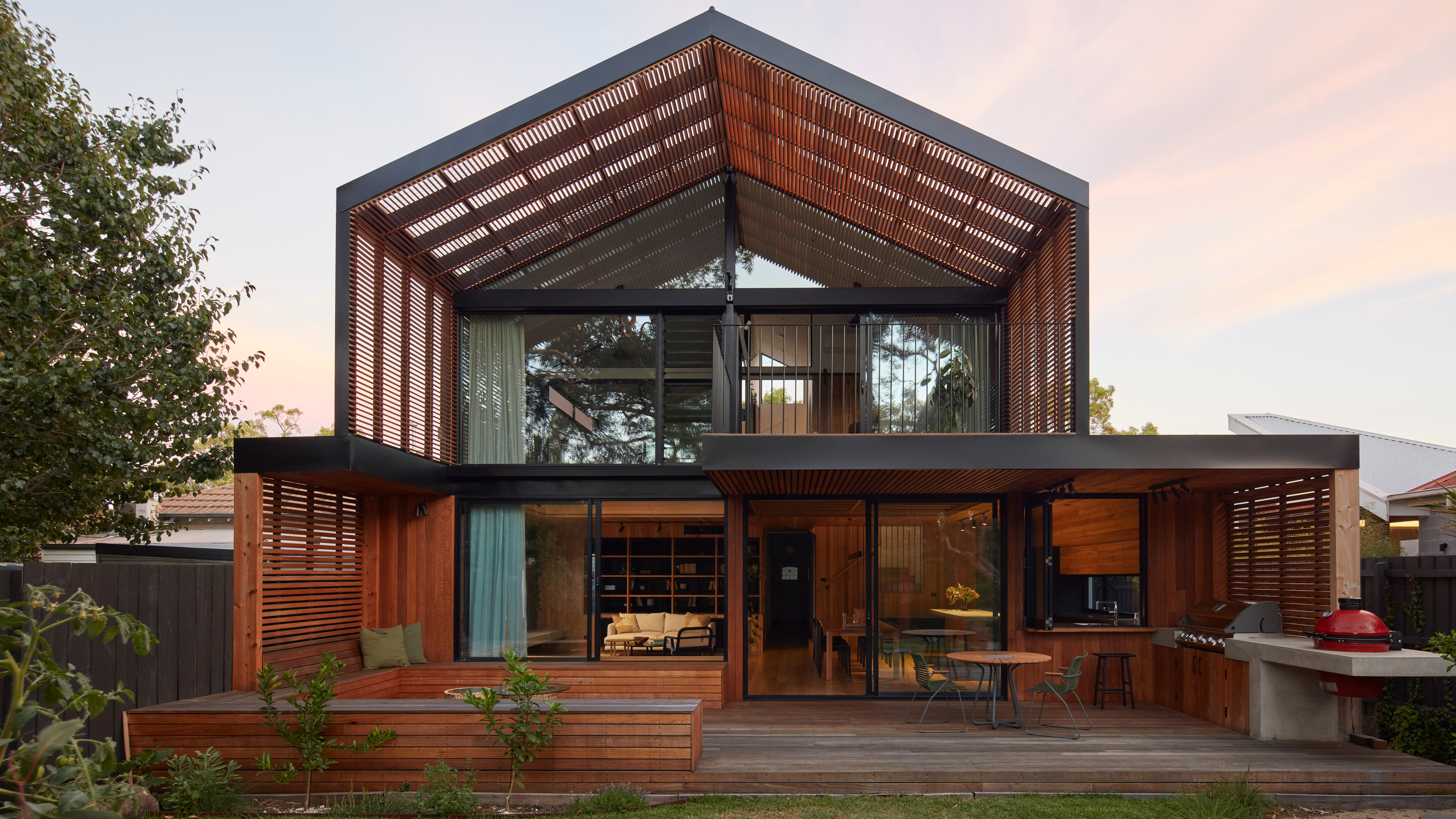
A balcony, whether it's on a compact city apartment or leading off of a bedroom or sunroom in a larger property, is a welcome feature, providing additional outside space and light. Yet in high summer, when the sun is at its hottest, it's often necessary to implement some balcony shade ideas.
The type of shade required will vary depending on the location, orientation, and size of your balcony. In the northern hemisphere, south-facing spaces will be more exposed to summer heat for longer than north-facing spaces. You may also want the sun for part of the day, or at certain times of the year, but not from daybreak to dusk all summer long. In hotter locations, permanent solutions may be necessary.
From curtains to balcony garden canopy ideas, we've gleaned 11 of the best balcony shade ideas from interior designers and garden landscapers that will work for any size or location.
1. Add a Fixed Gable Roof
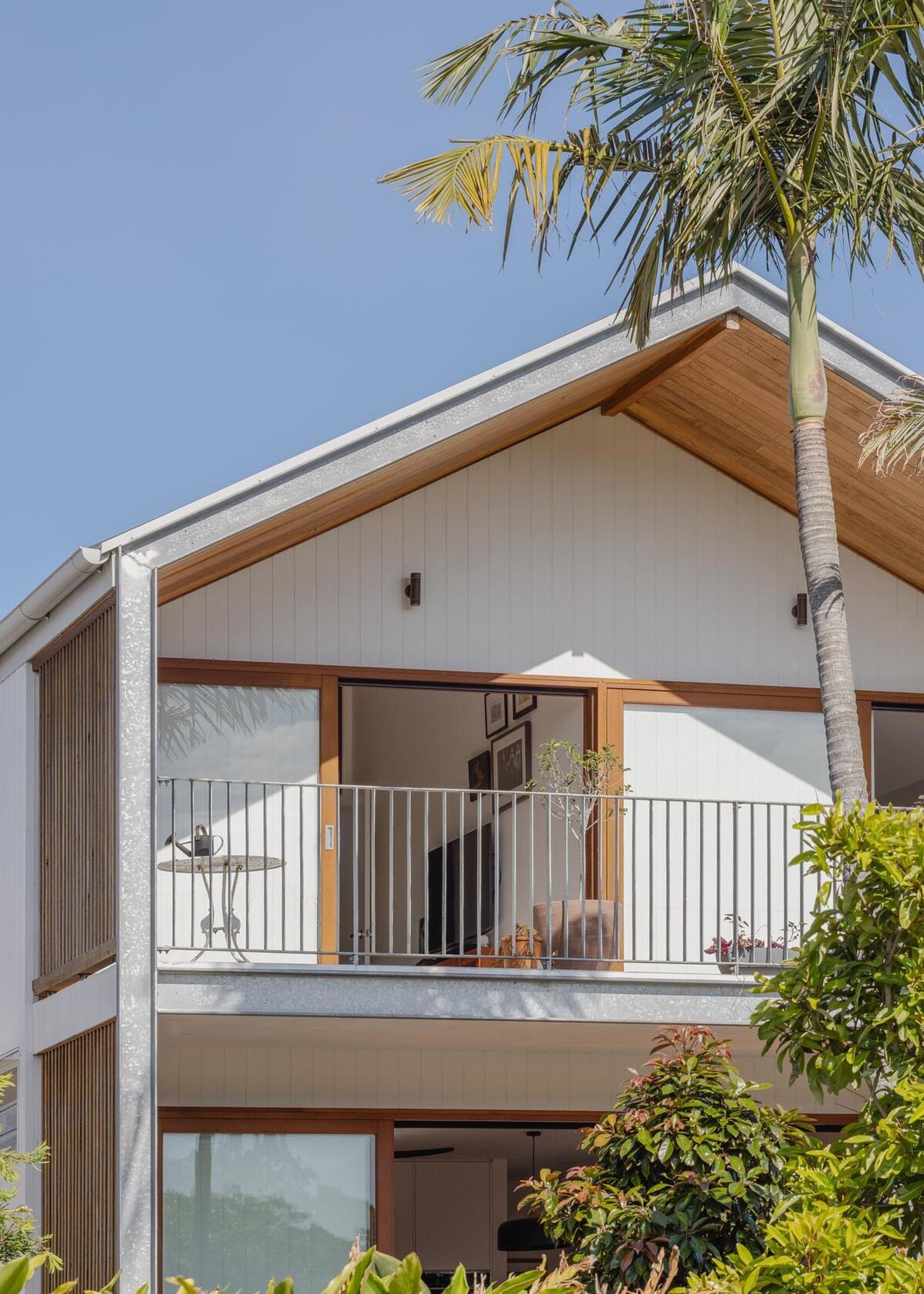
This striking pitched gable roof casts just enough shade onto the balcony.
For those who live somewhere hot and sunny, where a permanent solution to shade is required, a large open balcony with a pitched gable roof and slatted timber side panels is an eye-catching option.
This project from Vanessa Wegner Architects in New South Wales, Australia, originally a single-storey cottage, now has a two-storey extension to the rear, with a beautiful gabled roof, and slatted side panels, which enables an open, free-flowing feel, while also offering protection from the sun's intensity. The gable roof also has solar panels on the exterior for energy efficiency and sustainable home living.
"The permanent roof over the balcony is extremely important with the hot Australian sun," says Vanessa Wegner. "The extended pitched eaves also provide shelter from rain on the timber-framed doors, which allows more longevity to the material. We have clad the underside of the eaves with western red cedar to give the space more detail and to feature the overhang."

Vanessa Wegner is a registered Sydney architect, and founder Vanessa Wegner Architect. Her journey in architecture began with a Bachelor of Architecture degree from the University of Sydney, followed by key roles at renowned firms such as Andre Porebski and Associates in Sydney, Mecanoo Architecten in Delft, The Netherlands, and Gazzard Sheldon Architects (GSA) in Sydney. She brings a wealth of experience to her practice, having worked with leading design-focused architectural firms both in Australia and internationally.
2. Install a Retractable Awning
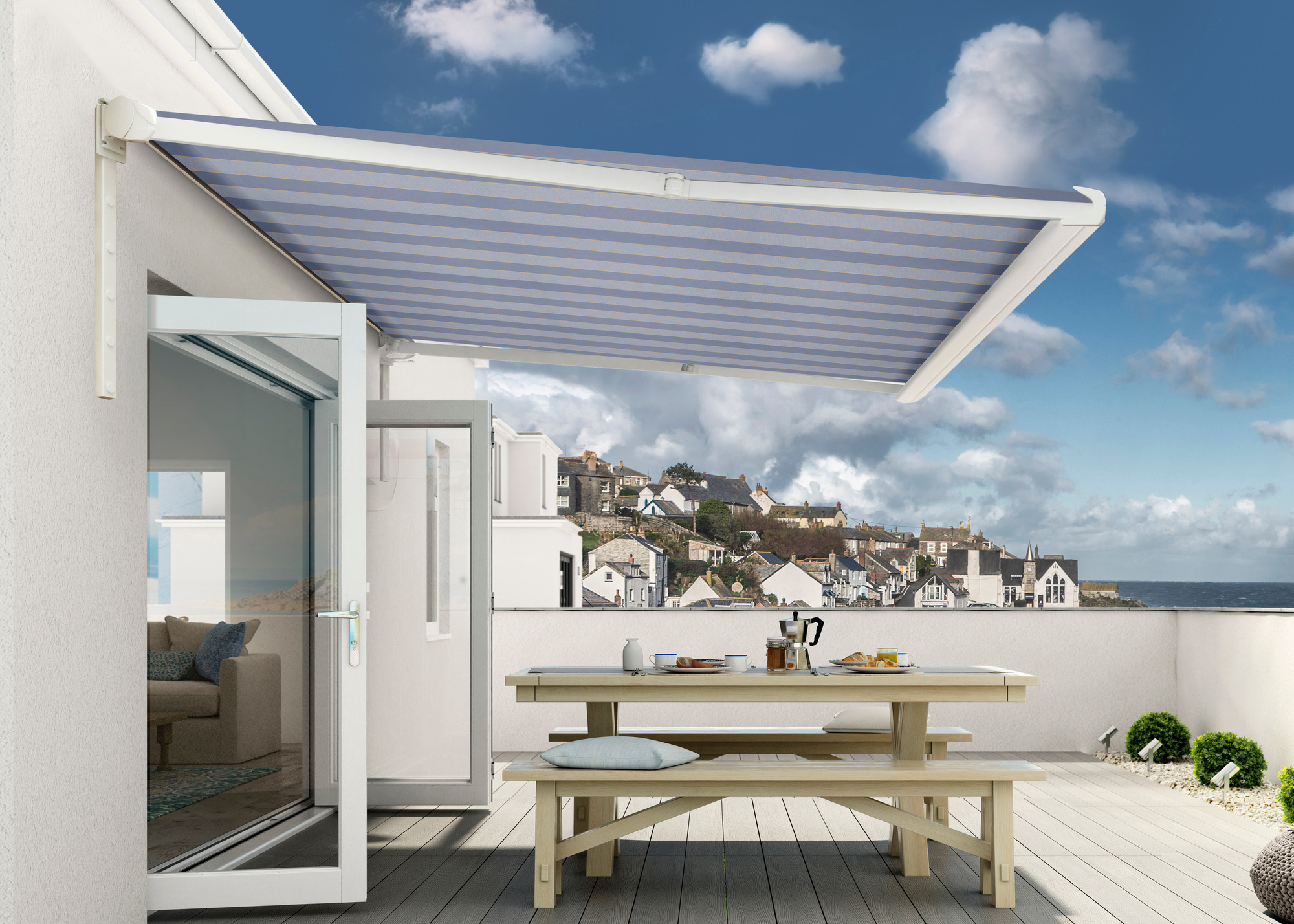
Classic blue and white striped awning cools this beachside balcony.
Some apartment blocks, particularly those on beachfronts, are fitted with identical awnings over every balcony, which look charming. If your balcony doesn't have this — and it is permitted — or you have a house with an upstairs balcony, a retractable awning is an attractive and flexible option, which is used in many patio shade ideas, too.
The Livingetc newsletters are your inside source for what’s shaping interiors now - and what’s next. Discover trend forecasts, smart style ideas, and curated shopping inspiration that brings design to life. Subscribe today and stay ahead of the curve.
"A retractable awning offers the ultimate blend of convenience and design, turning a sun-soaked balcony into a shaded outdoor room with the push of a button or the turn of a crank," says interior designer Nina Lichtenstein, founder of Nina's Home Design.
"Choose from sleek minimalist models that blend into the architecture, or classic striped fabrics that channel a European café terrace. Beyond blocking UV rays and reducing indoor heat, retractable awnings also offer flexibility: extend them when you need shade, and retract them for stargazing or maximum daylight."
Nina continues: "For apartment dwellers, wall-mounted or ceiling-suspended versions can often be installed without drilling into shared exterior walls, making them HOA-friendly and renter-conscious.
"Pro tip: Opt for weather-resistant, fade-proof fabric in a tone that complements your home’s interior palette. It creates cohesion between your indoor and outdoor spaces."
Hillary's has a wonderful selection of awnings in a range of colors and fabrics.
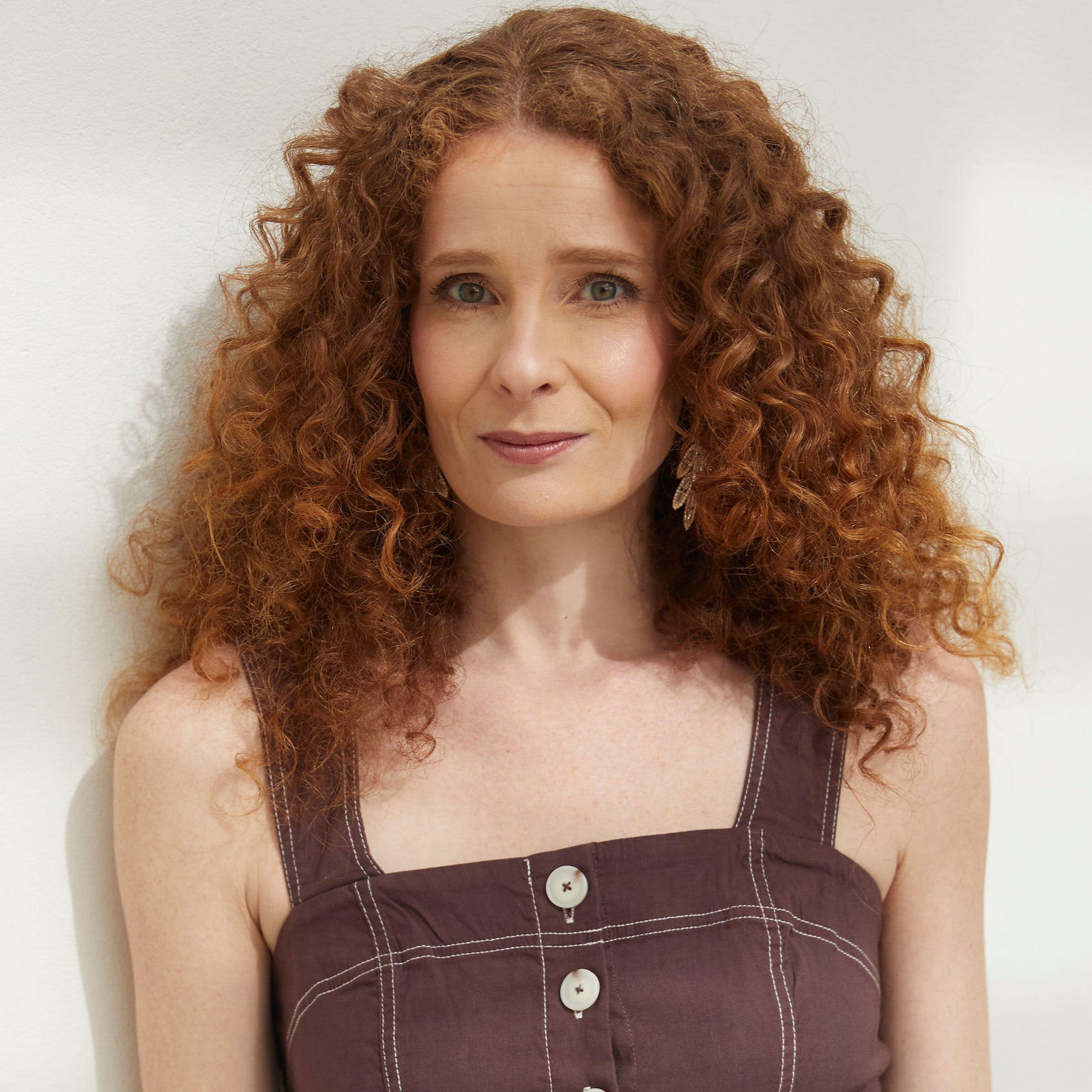
Nina Lichtenstein is the founder and principle home designer at Nina's Home Design in the U.S. For close to a decade, Nina has showcased her in-depth construction and design expertise on projects spanning the North East, where she is known for serene palettes, diverse textures, and elegant blends of stone, wood, and other natural materials.
3. Opt for an Overhead Pergola With Climbing Plants
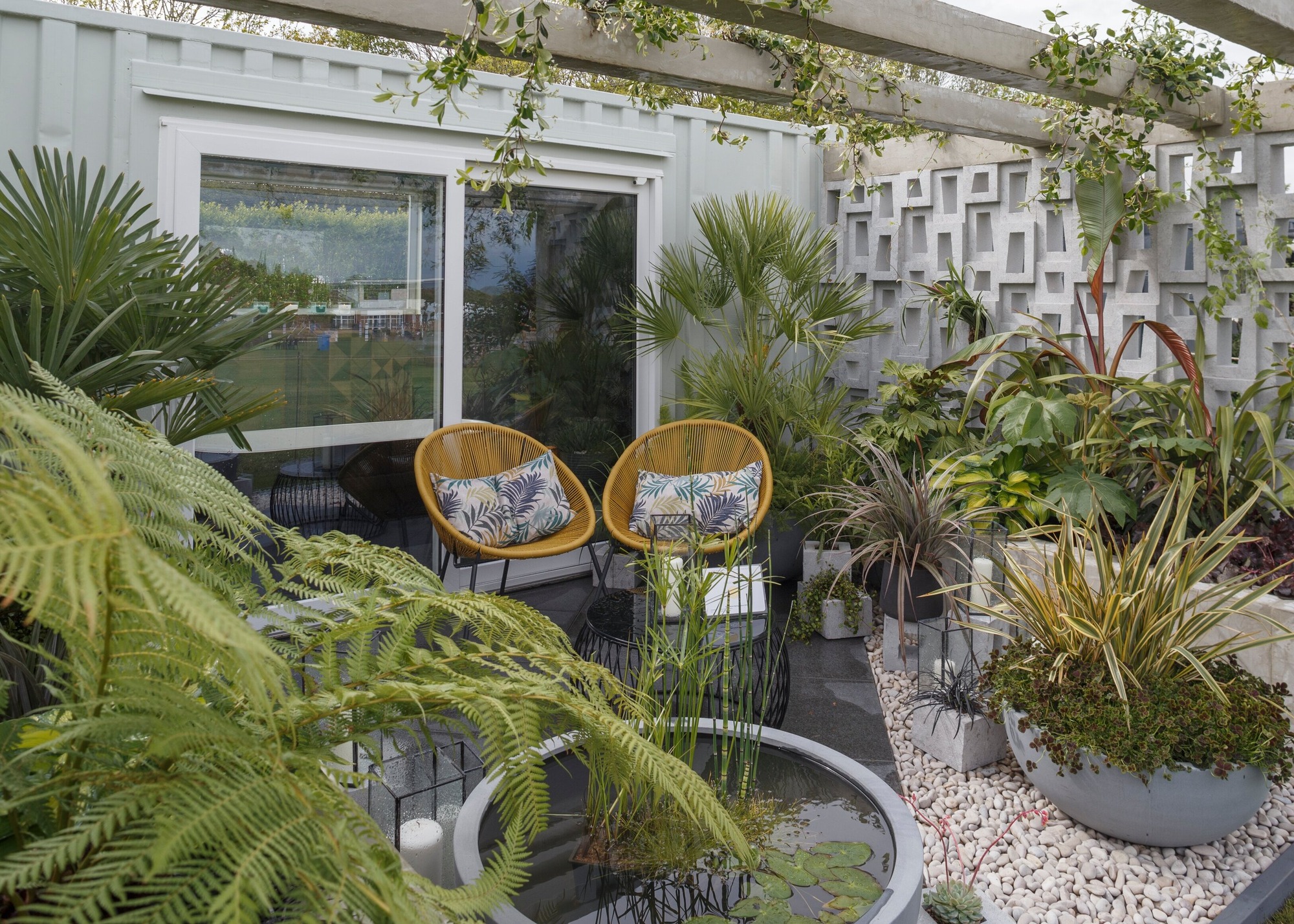
Create a shady garden oasis on your balcony with climbing plants over a pergola.
Pergola ideas aren't just for gardens. It's entirely possible to build one on a balcony. Just ensure that the structure and the plants you decide to grow won't cast too much shade in the darker months. Most deciduous fast-growing climbing plants, such as wisteria, will lose their leaves and can be cut back in the winter. So these may be a better option than evergreens.
"For a balcony that leans towards natural and romantic, consider a pergola or trellis structure — even a scaled-down version sized to fit a smaller footprint — and train climbing plants like jasmine, clematis, or grapevine to form a living canopy," says Nina.
"The result will be dappled light, natural insulation, and a lush, layered view. This kind of shading evolves with the seasons, offering not just protection but a changing sensory experience, from scent and shadow play in summer to sculptural branches in winter," explains Nina.
She adds: "This option works especially well for larger balconies or those off a bedroom or sunroom, where the view itself becomes part of the interior design. If you’re in a colder climate or need instant coverage, consider adding a tensioned canvas between the beams while your plants are growing. Over time, let the greenery take over."
This Young Star Jasmine Vine from Gardening Express would be a great place to start.
4. Add Sun-Shielding Outdoor Curtains
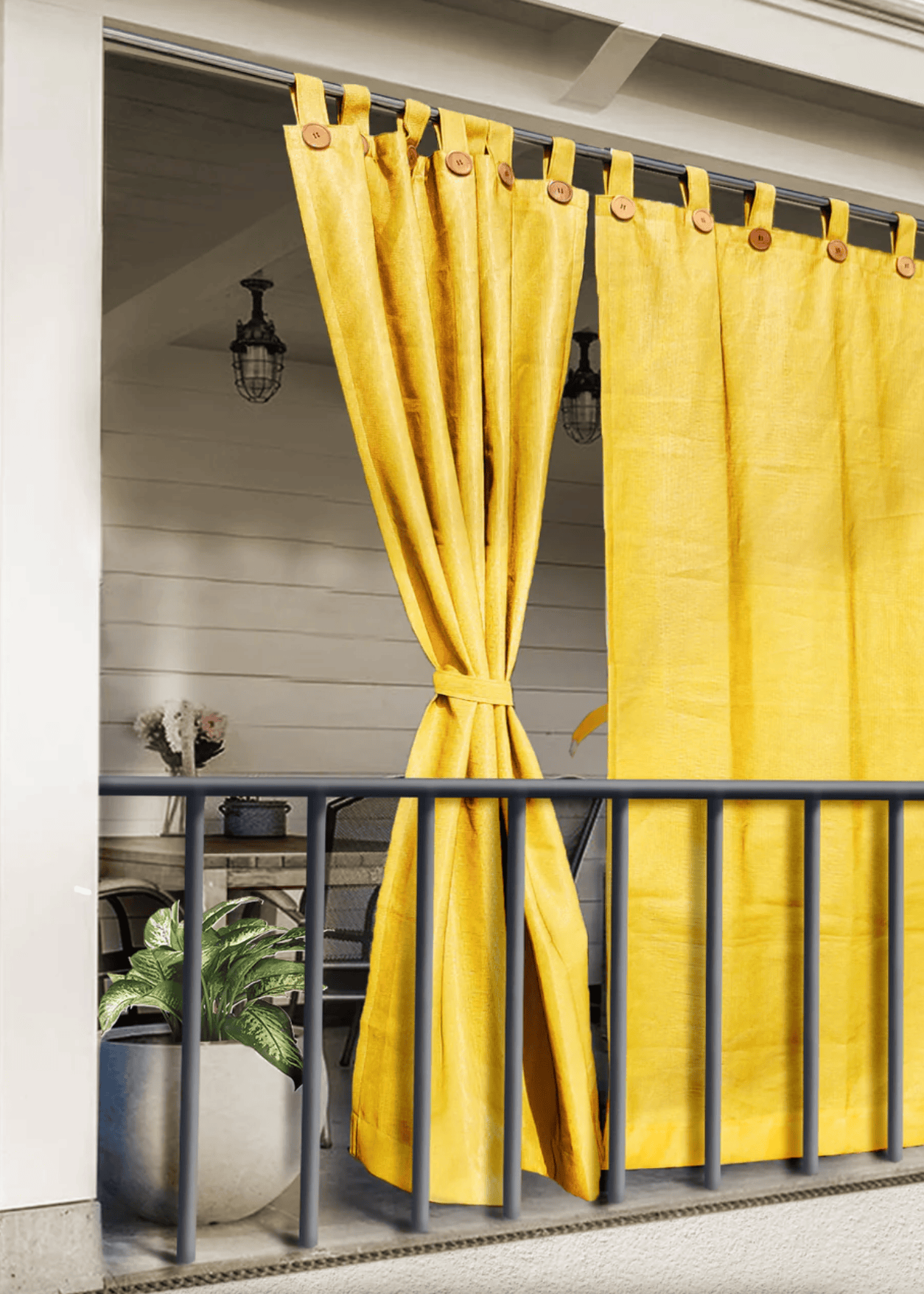
Choose sun-blocking fabrics for outdoor curtains for extra respite.
An excellent garden screening idea, billowing curtains with sun-blocking filters lend an easy, breezy feel to balcony spaces in the summer, providing plenty of shade when closed and dappled light when partially open. This indoor-outdoor living aesthetic can also be applied to terraces, thanks to the plethora of weatherproof fabrics and outdoor curtains now available.
"Nothing transforms a balcony faster than outdoor curtains," says Nina. "Hung from a tension rod or discreet ceiling track, they offer instant privacy and soft, flowing shade. Pull them closed to block direct sunlight or frame your view with romantic drama.
"Use linen-like outdoor fabrics for a breezy Mediterranean feel, or go modern with crisp white panels against matte black hardware. Bonus: they double as windbreaks and give your balcony a sense of enclosure, which is especially helpful in dense urban settings."
Ideally, Nina says you should hang curtains slightly wider than the balcony frame and let them drop for an elevated and "high design finish. But she warns, "Just make sure to choose mildew- and UV-resistant fabric for lasting beauty.
"Whether you’re sipping morning coffee on a high-rise patio or curling up with a book on a garden-facing balcony, shade transforms a balcony from 'extra space' to liveable sanctuary."
5. Fit a Timber Sunscreen
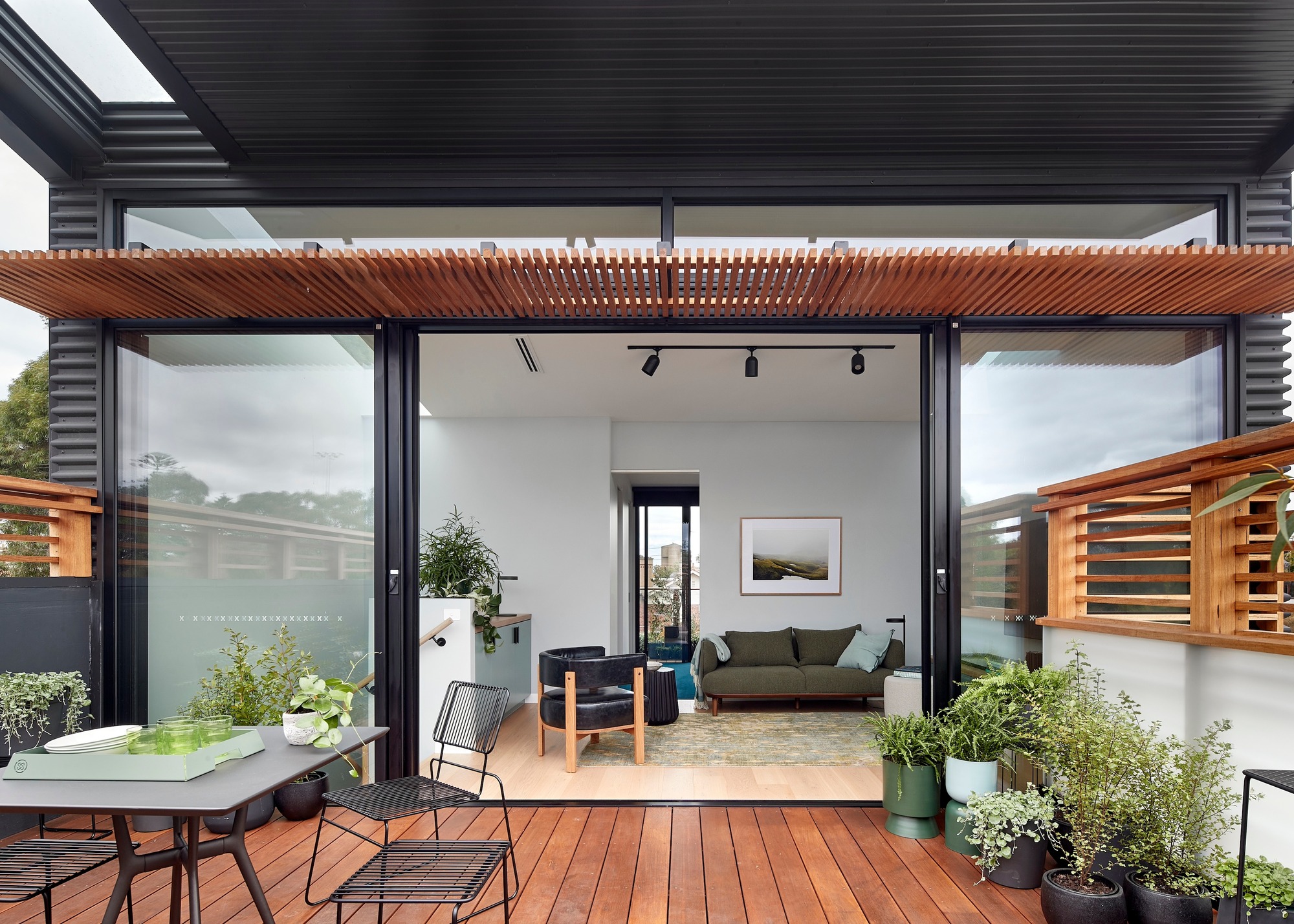
A timber screen protects the outside and the inside from excess heat.
The elegant slatted timber sunscreen on the top-floor balcony of this beautiful home in Melbourne, Australia, has been designed by architects McMahon & Nerlich and provides partial shade over the balcony, as well as the living space inside.
The timber chosen for the sunscreen echoes the warm wood tones of the decking below, as well as the stylish privacy screens around the perimeter of the balcony, which allow views of the surrounding landscape.
6. Line a Sun Trap With Multi-Stem Evergreens
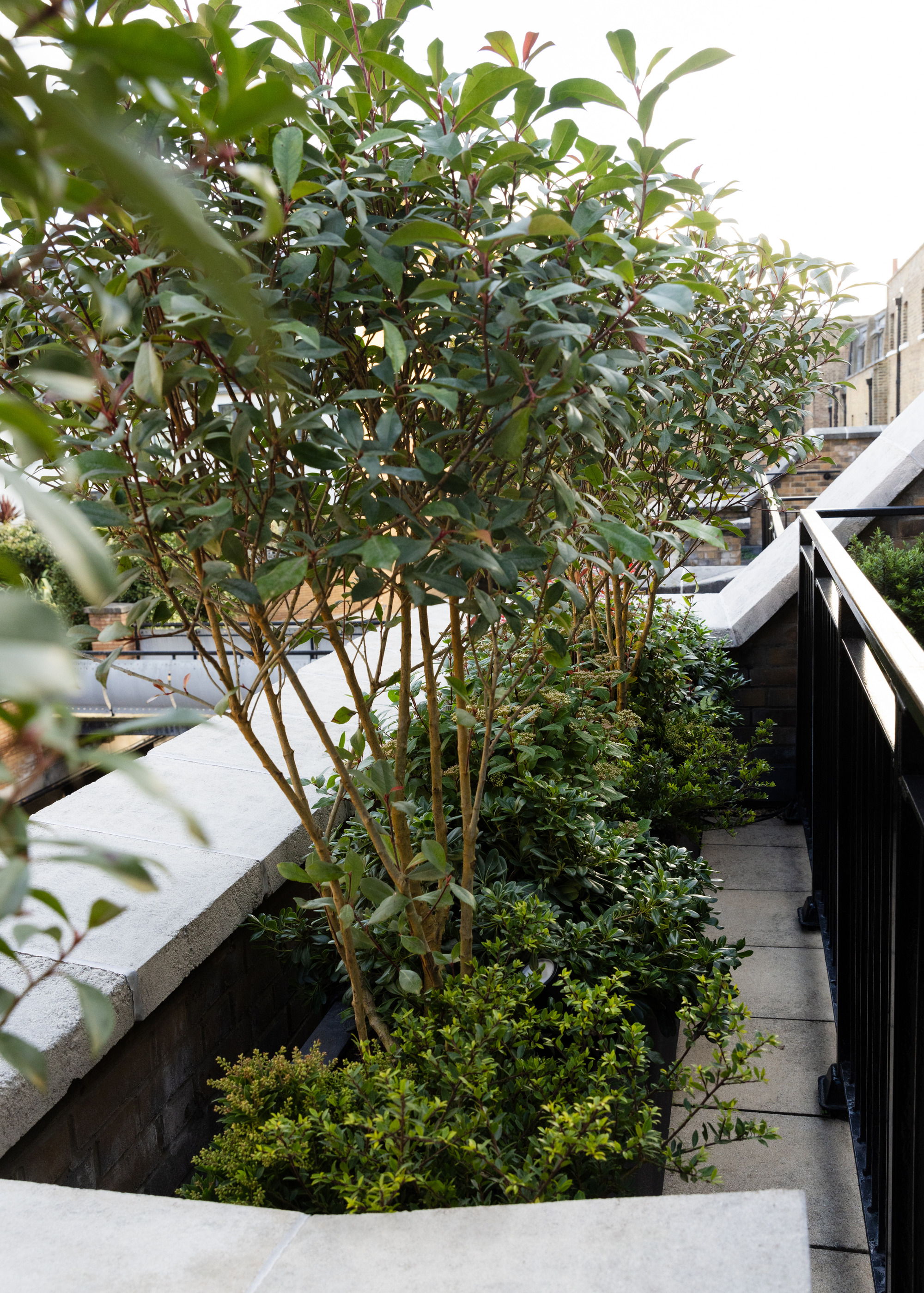
Line a balcony with lush evergreens for a shady green screen.
Of course, it's entirely possible to create balcony shade with potted plants. In fact, using greenery in strategic places will offer additional cooling effects. Additionally, plants and trees release water vapor through their leaves, a process called transpiration, which also provides shady spots.
"Creating shade with planting is a fantastic way to soften the look of a balcony, bring a sense of privacy, and create a cool, inviting space during the warmer months," says garden designer, Gina Taylor, founder of East London Garden Design.
"It’s also an opportunity to express your style — whether you lean more modern, Mediterranean, or lush and textural. It's important to respond to the balcony's aspect and microclimate, and choose plants that will thrive with as little stress as possible. Well-chosen planting not only provides shade but really elevates an outdoor space into a year-round retreat," says Gina, and is a great way to create a more climate-resilient outdoor space.
She continues: "For a contemporary look with year-round structure, I often recommend using multi-stem evergreens such as Laurus nobilis (bay) or smanthus burkwoodii. Both are slow-growing and perfectly happy in containers, so they won’t outgrow the space too quickly. They create a soft green canopy for shade and a sense of enclosure — ideal for balconies overlooked by neighbors.
"To add movement and texture, I’d underplant with drought-tolerant herbs such as trailing rosemary, thyme, sage, and lavender — they spill beautifully over the edges of pots and release their scent as you brush past. This combination thrives in full sun, is low maintenance, and provides an elegant, timeless look that works in both modern and more classic outdoor spaces."
GardeningExpress has a great selection of drought-tolerant herbs to incorporate into your space.
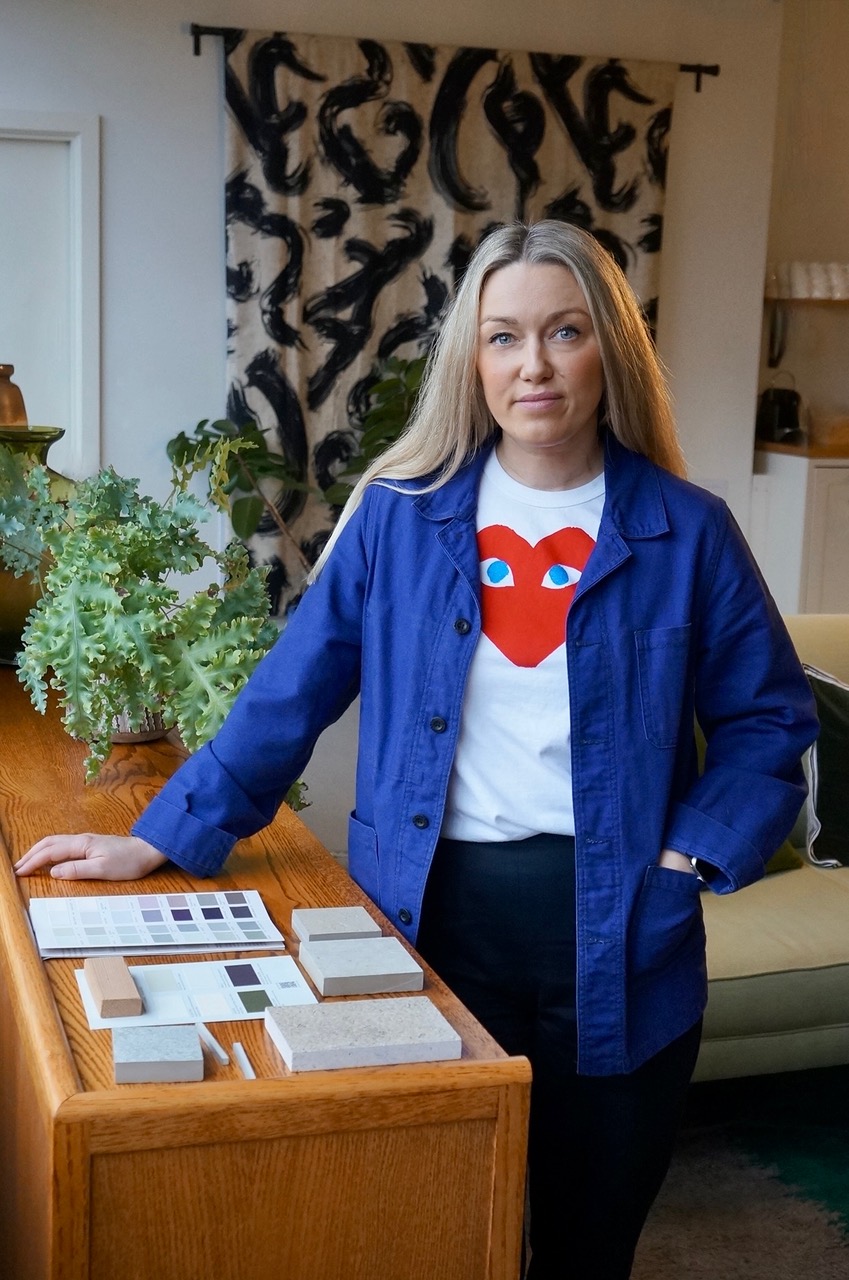
Gina Taylor is the founder and lead designer of East London Garden Design, a studio specialising in contemporary urban gardens, courtyards, and rooftops. Based in East London, Gina is passionate about creating outdoor spaces that feel like a true extension of the home — places that are welcoming, personal, and connected to their surroundings.
7. Create a Mediterranean Canopy With Drought-tolerant Trees and Layered Grasses
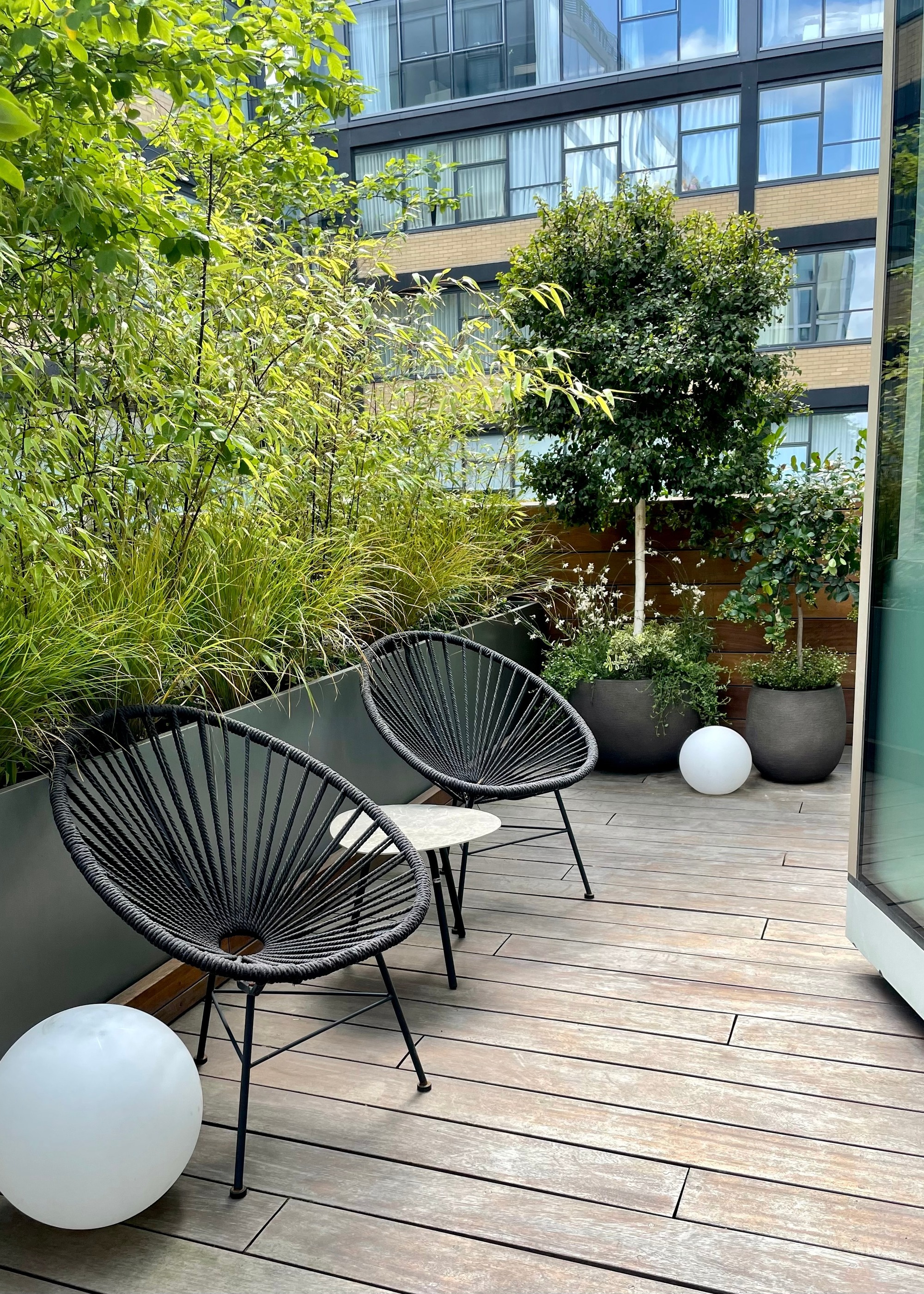
Choose drought-tolerant plants for a sunny spot.
A sunny, south-facing balcony is an ideal location for a Mediterranean garden, which can be created with an appropriate selection of trees, tall plants, and pots. Species that thrive in the sun and are drought-tolerant are the best option for creating shade. For a cooling green screen, plant them in a long trough container, along the length of your balcony.
"If you’re dreaming of that relaxed, holiday-in-the-Med vibe, choose sculptural evergreens such as Olea europaea (olive trees), dwarf pines like Pinus mugo, or the striking Scots Pine ‘Watereri’, all planted in generous pots and grouped around your seating area to create an informal canopy," says Gina.
"Underplant with soft, airy grasses such as Stipa tenuissima or the copper-tinged Carex testacea to bring movement and texture. For added color, fragrance, and a natural ground cover, weave in clumps of Nepeta racemosa ‘Walker’s Low’ (catmint) or Santolina chamaecyparissus (cotton lavender). These plants thrive in full sun, tolerate dry conditions, and need very little upkeep — plus, they look effortlessly chic against natural stone, concrete, or timber decking," adds Gina.
8. Build a Pergola With a Cane Roof
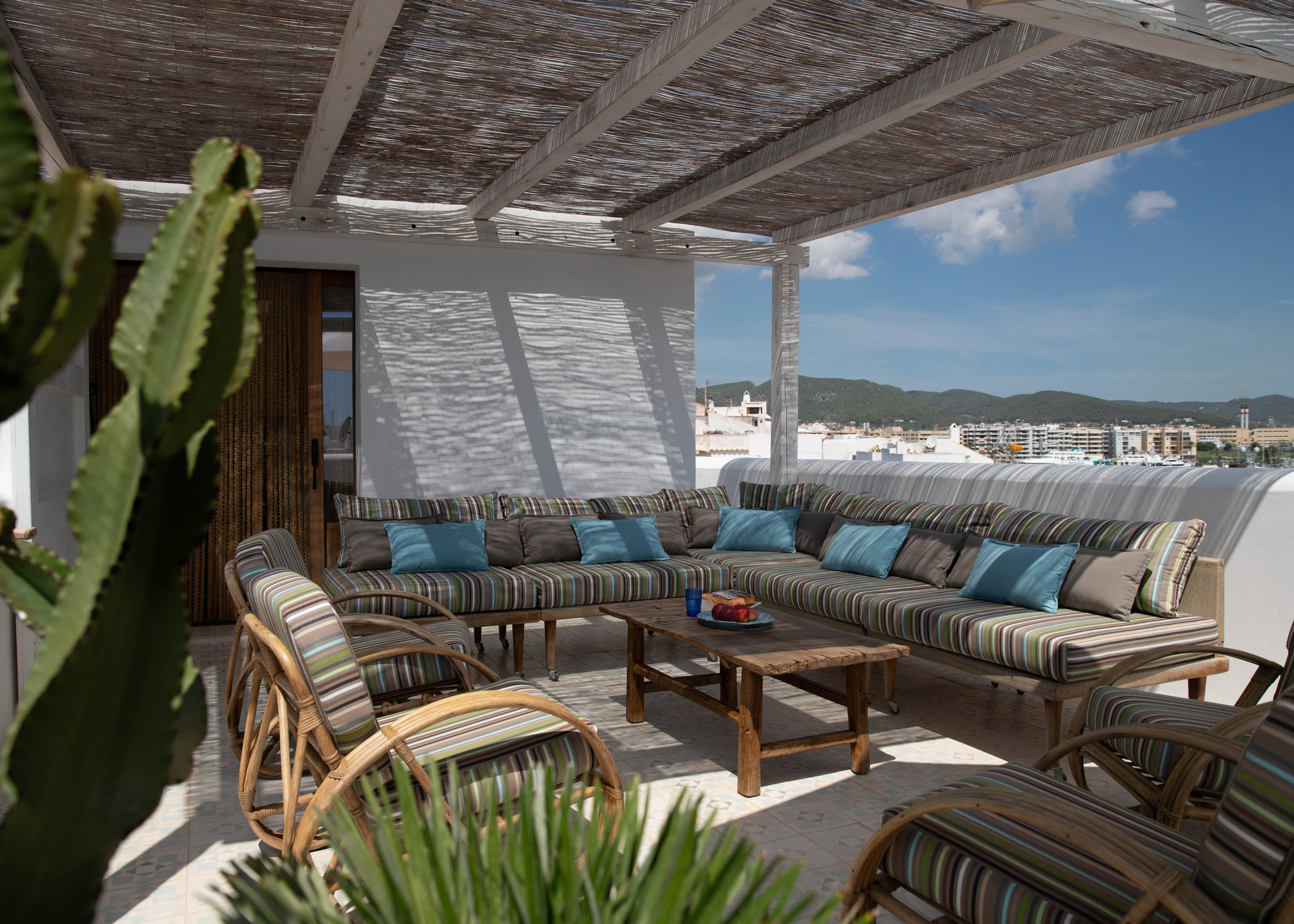
Bask in dappled light under a rattan roof.
If you live somewhere with year-round sunshine, a fixed solution may be required for the pergola roof on a sunny, south-facing balcony.
This pergola on a property in Ibiza has been topped with a cane roof, so the balcony is swathed in dappled light during the warmer months when the balcony is used. However, this option is less suitable if you live in a cooler climate and want to avoid casting shade into your home in the winter, when it's dark and gloomy outside.
"When introducing shade to a balcony, we always recommend using light, natural materials and avoiding full coverage," says James Lees, co-founder of interior design studio, Pirajean Lees. "For a residential project in Ibiza, set on a cliffside, overlooking the Mediterranean sea, we designed a pergola using traditional, locally sourced timber with a cane canopy.
"To match the walls, the timber was painted white so that the structure felt light and open, and blended seamlessly with the architecture. The cane canopy offers a gentle filter for the sun, providing shade whilst casting beautiful shadows across the terrace. Given the terrace’s exposed position, we chose natural materials that not only resonate with the local vernacular but also age well in the sun and salty sea air."
9. Specify a Feature Roof
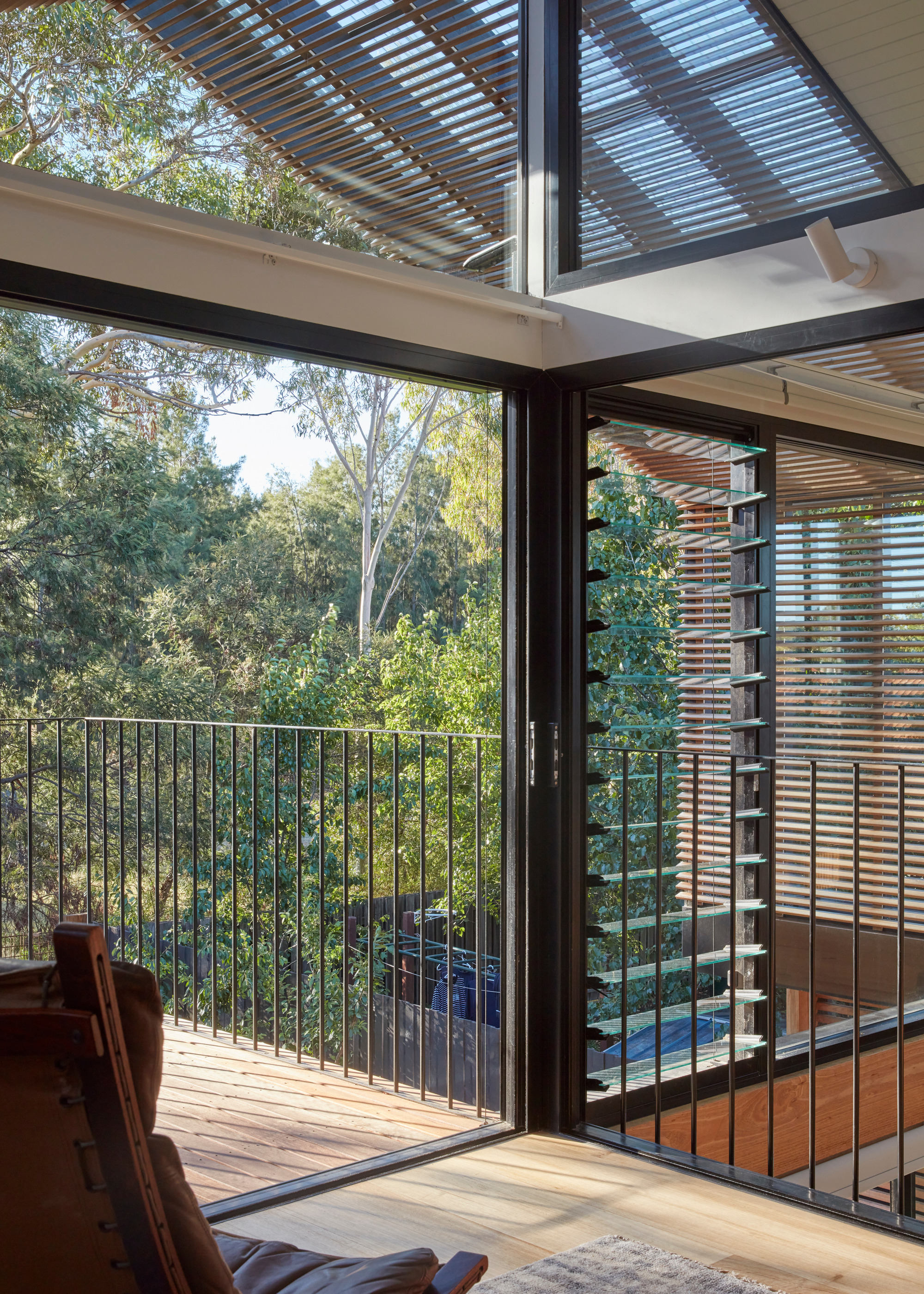
Turn a practical purpose into a design statement.
Budgets obviously vary, but if you live in a hot spot and require year-round shade over a balcony, consider investing in a permanent solution, like this spectacular slatted pitched roof over this house in Northcote, Victoria, Australia.
Designed by Ben Callery Architects, the project has biophilic principles at heart, with a large open balcony connecting to the nature park beyond. The roof is crafted from local Victorian Ash, while the timber slats are angled to block the summer sun.
"The roof eave and wrap down slatted screen is performing many functions, both pragmatic and emotive," says Ben. "Primarily it's providing shelter from rain over the back deck as there is a clear roof over the slatted eave. However, the slats are also angled to provide shade, blocking out high summer sun while letting in let lower winter sun. Where they wrap down the side, these angled slats provide privacy to and from neighbouring properties too.
"Then on a more emotive biophilic level, the timber slats reaching out to the trees in the parkland beyond, and letting in dappled light, enhance the feel of connection with nature that is so important for this family and in all of our homes.“
10. Train a Vine Over a Trellis
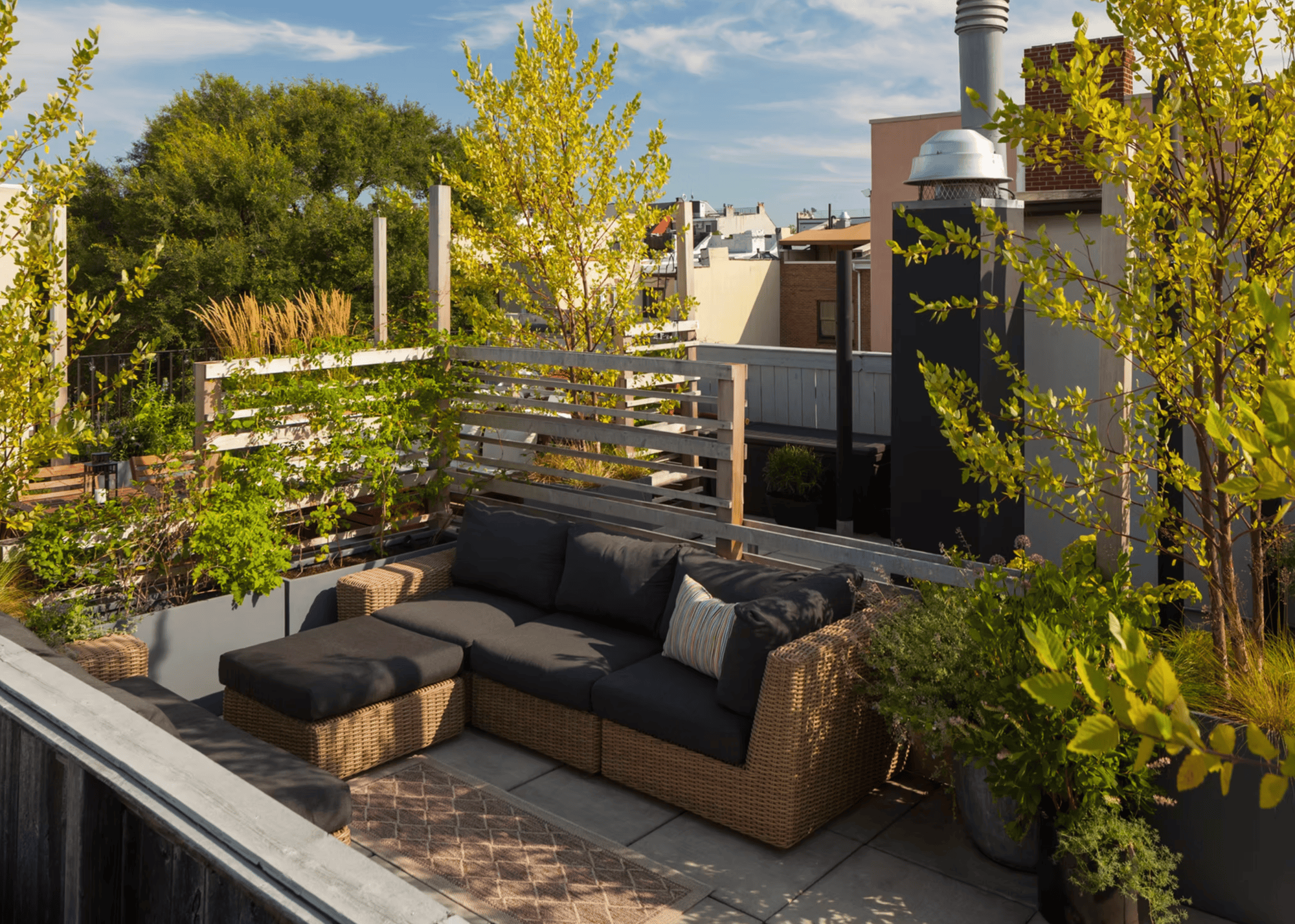
Train vines and fast-growing climbing plants over trellis as part of your vertical garden ideas for balcony shade.
Pergolas look lovely, but they can take up valuable space on a compact balcony. An alternative option for smaller areas is to fit a vertical trellis and train fast-growing climbing plants to grow over it. Even without the plants, the structure will provide a little shade, but extra greenery will have a more cooling effect.
"I love using fast-growing climbers like Clematis armandii, sweet autumn clematis — both of which are perennial — or Mandevilla (an annual) to add vertical greenery and filtered shade without taking up too much floor space on a balcony," says New York-based landscape gardener, Kat Aul Cervoni, founder, Staghorn Living.
"These sun-loving, drought-tolerant vines are easy to train along a trellis, a wire frame, or existing railing — offering both privacy and dappled shade as they grow and fill in."
GardeningExpress has a wide selection of Clematis to choose from as part of your balcony shade ideas.

Landscape designer, Katherine "Kat" Aul Cervoni is the founder and principal of Staghorn Living. Kat creates outdoor spaces that become natural extensions of a home’s interior. A member of the Ecological Landscape Alliance and the Association of Professional Landscape Designers, she also mentors young plant enthusiasts and upcoming designers.
11. Place a Small Tree or Two in a Strategic Spot
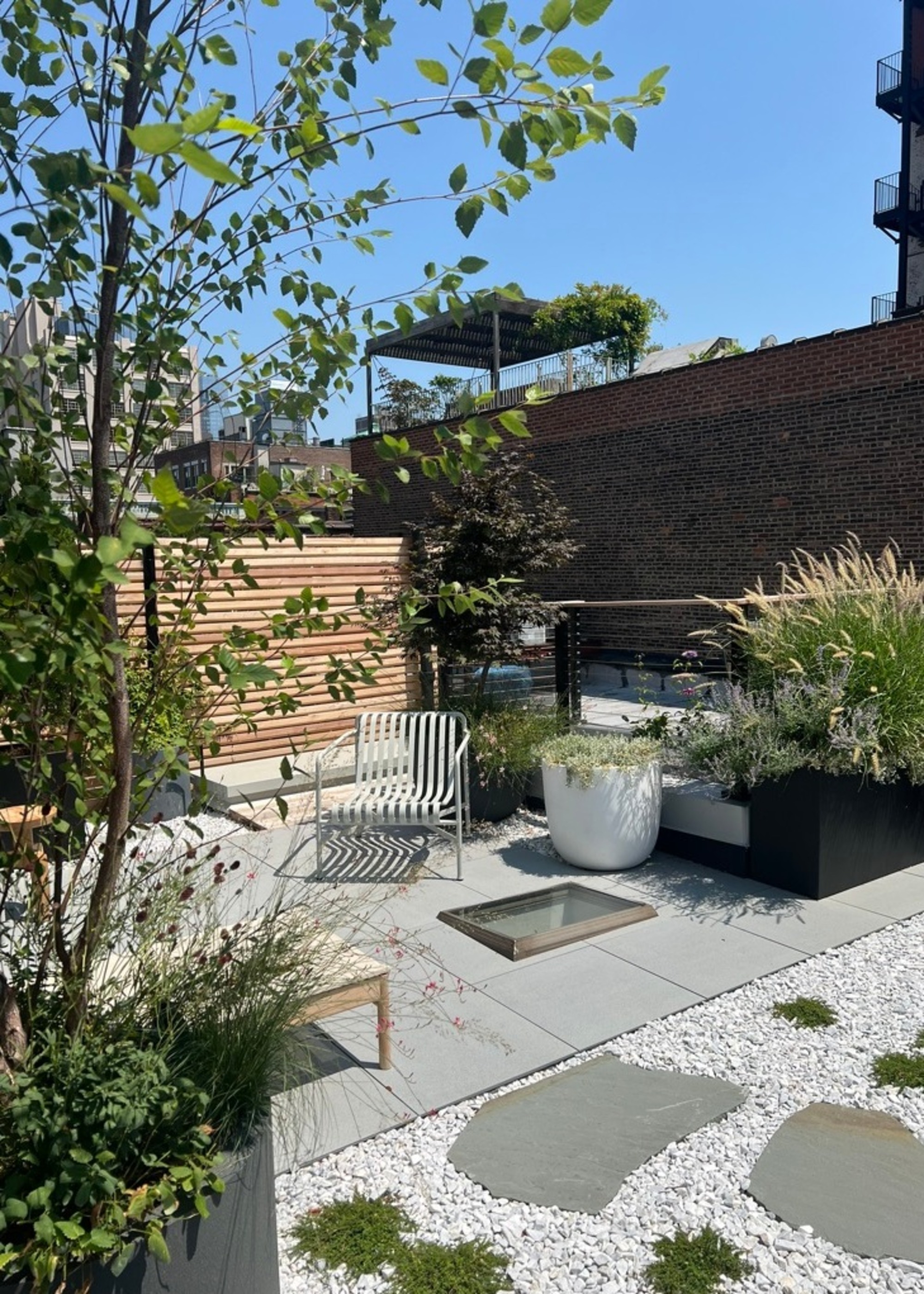
A small potted tree in the right spot will provide shade on a balcony.
Filling a balcony with tall cooling plants is wonderful, but if you lack space or don't have the time to tend to lots of plants, a potted single, small tree — like one of these best privacy trees for small backyards — or two, placed in the right spot, can provide shade (and privacy). It, or they, can also be moved if required.
"If your balcony can support the weight, a compact tree like Amelanchier canadensis (serviceberry) or Japanese maple in a large planter creates canopy-like shade while also adding structure and seasonal beauty," says Kat.
"Choose varieties that stay under 15 feet tall and enjoy partial to full sun. Just be sure the container is deep enough and the tree gets consistent water, especially in summer.
"I recommend a minimum pot diameter of 24” for trees to allow for some growth — less than that can shorten your tree's lifespan."
FAQs
How Do I Reduce Sunlight on My Balcony?
If you live in a temperate region, a retractable overhead awning is one of the best ways to reduce sunlight on a balcony. The benefit of this is that it can be quickly and easily folded away on cloudy or darker days when you welcome the sunlight, as opposed to fixed structures, which may provide shade, even when you don't want it.
If you're renting, or there are restrictions in your block, and fitting an awning is not possible, a trellis, with or without plants, outdoor curtains, or a garden parasol, are all good temporary options. Again, these are flexible ways to reduce sunlight, without blocking it when you do want it.
This TVETÖ Tilting Parasol from IKEA would do just the job.
How to Make a Balcony Less Hot
Any type of suitable balcony shade idea will make your space cooler. Combining flexible options, such as awnings, parasols, or outdoor curtains, with plenty of plantings, is the best solution if this is just a summer issue. The former can be stowed away when not required, while potted plants and trees will cool the air by releasing water vapour through transpiration; they will also absorb CO2, and deciduous species will generally drop their leaves in winter.
If you live somewhere hot and want more permanent shade on a large balcony, consider a pergola with a fixed (or retractable) canopy, a fitted sunscreen, or permanent roof structure, as well as plants suitable for your zone.
When considering balcony shade ideas, consider the practicalities thoroughly and opt for a solution that suits your lifestyle, budget, and home exterior. There's no point installing a pergola or fitting a fixed, permanent shade if you live somewhere with only a few weeks of intensely hot weather. In this case, a flexible option will suit best. Think about how you will store your shade when it's not in use, too.
"The various options for balcony shade — whether a retractable structure, living architecture, or soft textile — offer a distinct mood and function," says Nina. "The key is choosing one that suits your light conditions, lifestyle, and the feeling you want to cultivate."
We also have some great tips for designing an east-facing balcony, if your space points in this direction.
Jacky Parker is a freelance lifestyle journalist and writer, producing a wide range of features for magazines and digital platforms. She has written for Livingetc and its sister titles, Homes & Gardens and Country Homes & Interiors for more than 15 years, both as a freelance contributor and as Acting Digital Editor and Acting Style Content Editor, regularly reporting on the latest interiors, gardens and wellness inspiration, speaking to experts in their respective fields, and discovering the best tips.
Jacky has also written for other publications, including Sunday Times Style, The Telegraph, Architectural Digest, House Beautiful, ELLE Decoration, Red, Grand Designs and more.
